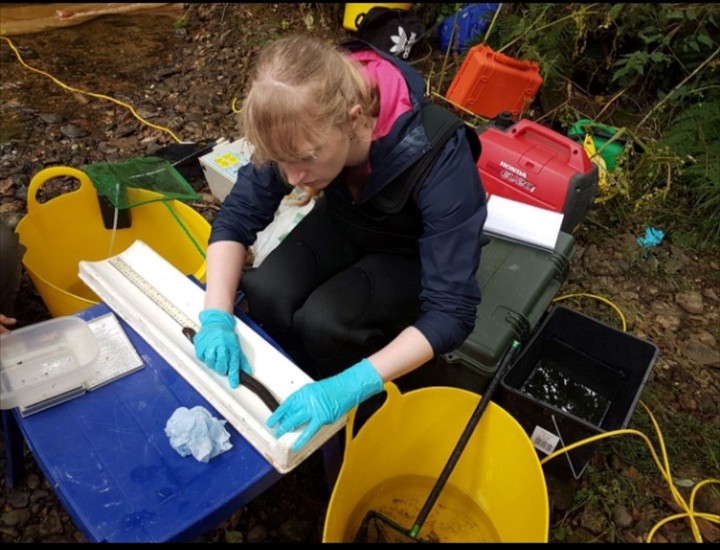Swimbladder mechanical response
 Photo credit Dr. Andrew Vowles
Photo credit Dr. Andrew Vowles
Impact of the nematode Anguillicoloides crassus on the European eel swimbladder
The critically endangered European eel (Anguilla anguilla) was inadvertently infected by the invasive nematode Anguillicoloides crassus, primarliy impacting the swimbladder. This may reduce swimbladder function, which may be fatal for eel undergoing their > 5000 km journey to spawning grounds in the Sargasso Sea.

Physiological damage has been well studied through the use of quantifiable gross pathological indices. However, these cannot separate the role of mechanical and morphological damage.

This study performed uniaxial tensile tests on infected eel swimbladder populations and compared them to the appropriateness of three commonly-used indices, as a measure of mechanical damage.

We show that thickness correlates most strongly with mechanical damage. This result both confirms, and more importantly, explains counterintuitive findings of earlier work. Increasing wall thickness raises the pressure required for organ rupture, however, decreases strength - thereby, in a damaged swimbladder, the immune response leads to a trade-off.